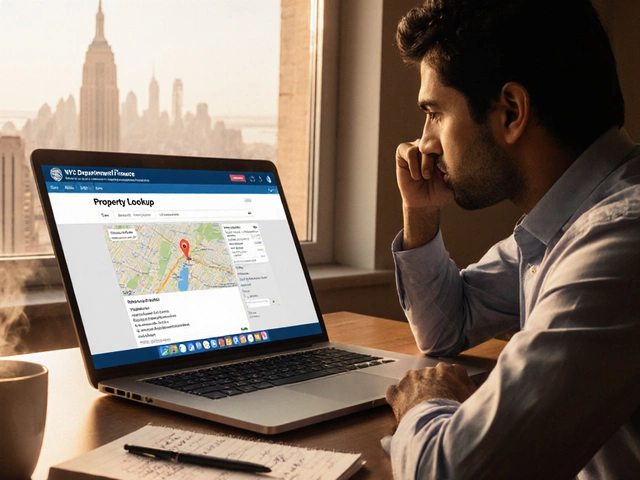Ever wondered how much profit landlords really make from commercial properties? It's one of those questions that can make or break your decision to dive into real estate investment. Let's clear the fog around these numbers and see if they're as tempting as real estate agents often make them seem.
First off, let’s admit there’s no ‘one-size-fits-all’ answer here. Profit margins can swing wildly depending on a bunch of factors. Location - probably doesn't surprise you - is huge. A storefront smack-dab in bustling downtown? You can expect a premium on rent, for sure. But even beyond geography, market dynamics play a huge role. In any given year, a buoyant economy might push profits up, while a downturn pulls them down.
Now, how you manage your property can make a big difference. Efficient operations, like keeping up with repairs or enhancing the property's appeal, can reduce downtime and increase tenant satisfaction – which generally means better returns. Also, keeping an eye on market trends and adjusting your rent accordingly helps boost profitability without scaring off tenants.
- Understanding Landlord Profit
- Factors Influencing Profitability
- Maximizing Rental Income
- Challenges and Opportunities in Commercial Real Estate
Understanding Landlord Profit
Let's get into the nuts and bolts of landlord profit in the commercial property game. It's a world where profits aren't always as straightforward as "rent - expenses = profit." A lot goes on behind the scenes to make sure you see black on your balance sheets.
Full disclosure: depending on where your property is located, your profit could see some pretty wild swings. For example, urban centers tend to be more lucrative given higher demand for space. But, expenses like property taxes and maintenance can slip up on you. That's why understanding local market metrics, such as rental yield and occupancy rates, is so important.
What's rental yield, you ask? It's how much return you make on a property investment through rental income, expressed as a percentage. To find it, divide your annual rental income by the property value and multiply by 100. Simple, right? A healthy yield can be anywhere between 4% to 8%, depending on various factors, like the economic climate and property appeal.
Hey, there's also a bit of magic in financial management here. While strong rental income is great, minimizing costs is just as important. Many profitable landlords keep a close eye on maintenance schedules and energy efficiency upgrades. It lowers operating costs and plays into long-term value preservation.
And just so we're clear, passive income might be the dream, but without active management and property upkeep, profits can fizzle out fast. Smart landlords balance between passive strategies – like hiring a property manager – and active engagement with their properties.
Speaking of trends, let's not forget the numbers. A 2023 survey by the Commercial Real Estate Development Association showed landlords in urban areas saw a 10% increase in rental incomes post-pandemic, proving recovery and growth in rental markets.
Here's a simple breakdown of elements affecting landlord profits:
- Location: Urban vs. rural areas show different profit dynamics, with tenant demand often higher in cities.
- Expenses: Cautious cost management increases net gains.
- Market Trends: Adjusting rental rates according to market conditions can significantly impact profitability.
Understanding these nuances is crucial to harnessing the full potential of commercial property, and becoming a successful landlord is as much about strategic vision as it is about numbers.
Factors Influencing Profitability
When it comes to making real money in commercial real estate, several key factors can either pad or pinch your profit margins. Understanding these elements can make your venture into being a landlord much more profitable.
First on the list is the location. The old adage, 'location, location, location,' holds true. Prime locations with high foot traffic translate to higher rental income. But it's not just about the address; accessibility to transport hubs and amenities can amplify demand and allow you to charge a premium.
Next, consider the property's condition. A well-maintained space is inviting to potential tenants and can significantly reduce vacancy rates. Regular maintenance might seem like a cost, but it really is an investment in securing consistent rental income.
Market dynamics play a pivotal role too. A vibrant economic environment boosts consumer spending, which can increase demand for commercial spaces, thus pushing rental prices up. Keeping an eye on economic indicators can help you make timely adjustments to your strategy.
Don’t forget about tenant quality either. Securing reliable and stable tenants who pay rent on time and have a steady business ensures a regular income stream. It might seem nice to fill spaces quickly, but choosing the right tenant can save you headaches and money in the long run.
Finally, effective property management is key. This is where you can either shine or sink. Regularly reviewing rent levels, maintaining good relationships with tenants, and optimizing operational expenses can significantly enhance your bottom line.
Here's a quick look at some typical expense percentages for a typical commercial property:
| Expense Category | Percentage of Income |
|---|---|
| Maintenance and Repairs | 10-15% |
| Property Management Fees | 3-10% |
| Property Taxes | 10-25% |
| Insurance | 5-10% |
In a nutshell, by being proactive and focusing on these factors influencing profitability, you can really take your commercial property investment to the next level.

Maximizing Rental Income
If you're looking to crank up your rental income, there are a few tried and true strategies that savvy landlords swear by. Boosting your earnings isn't so much about squeezing every last penny out of your tenants but more about smart management and creating a place where people actually want to stay.
First up, think of your property as an evolving asset. Periodic upgrades and renovations can drastically increase its value. Not only can you charge higher rents, but your property will also stand out in a competitive market. According to a survey by the National Association of Realtors, properties with modern amenities earn 15% more in rental income than those without.
“Good properties attract good tenants.” - Emily Kane, Real Estate Investment Expert
Another strategy is offering flexible lease terms. In today’s fast-paced world, tenants value flexibility. Offering short-term lease options or month-to-month agreements can attract a wider pool of potential tenants who might be willing to pay a bit more for that adaptability.
Establishing rapport with your tenants goes a long way. Happy tenants are long-term tenants. Treat them well, and they’re less likely to move out, ensuring steady income and reducing expenses related to tenant turnover.
- Upgrade amenities regularly to appeal to premium clients.
- Offer flexible lease terms to cater to diverse tenant needs.
- Maintain strong tenant relations to ensure high occupancy rates.
- Keep a close eye on market trends to adjust rent competitively.
Another tip? Take advantage of technological advancements. Use property management software to streamline rent collection and scheduling maintenance. Such tools not only reduce your administrative burden but also minimize errors, ensuring you don't miss out on potential earnings.
Lastly, optimize your tax strategies. Consulting with a real estate-focused tax advisor can reveal deductions you might not be aware of, increasing your net profit without raising rents. You’d be surprised at how much you can save with the right guidance!
By implementing these steps, you’re not just increasing your rental income, but also enhancing the value and reputation of your commercial property, making it a standout choice for anyone looking to rent.
Challenges and Opportunities in Commercial Real Estate
Diving into the commercial real estate market can feel a bit like wandering into the wild west—it's thrilling but packed with challenges and opportunities. So, what should you really look out for as a landlord in this unpredictable landscape?
First, let's chat about the challenges. The number one headache: market volatility. Real estate is super sensitive to economic swings. A booming economy can shoot rental income through the roof, but just as quickly, a recession can tighten wallets and drop demand. Add to this the regulatory hurdles; keeping up with changing zoning laws and property taxes can be a full-time job in itself.
Then, there’s tenant turnover. Unlike residential contracts, commercial leases may be short-term or have complex terms. High turnover can mean vacancy periods, which directly hit your wallet. The trick? Finding reliable tenants who align with your property's vibe and needs.
But it's definitely not all doom and gloom—there's a wealth of opportunity out there. The rise of e-commerce has fueled demand for logistics and warehouse spaces, making it a lucrative niche. Plus, sustainable buildings aren't just trendy—they can bring in higher rents and even tax incentives.
Commercial properties often allow more flexibility with lease terms and opportunities for creative deals. Got negotiation skills? You're in luck. Customized agreements can be crafted to fit both landlord and tenant needs, often leading to longer, more profitable leases.
| Factor | Impact on Profit |
|---|---|
| Location | High |
| Tenant Type | Medium |
| Economic Climate | High |
| Property Management | Medium |
In the end, while challenges lurk, so do fresh possibilities for those ready to adapt and stay informed. Keep learning, keep adapting, and your commercial real estate game could very well be a winning one.





